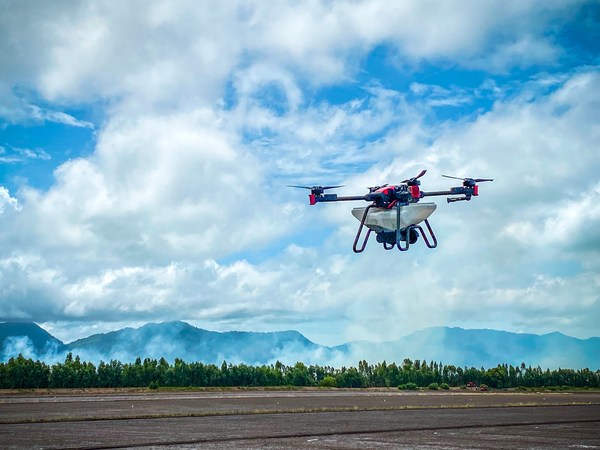TAM NONG, Vietnam, August 29, 2022 /PRNewswire/ — As a more cost-effective tool, XAG agricultural drones are becoming Vietnamese farmers’ “new favourite” for rice cultivation. The drone can spray pesticides, spread fertilizers and sow seeds directly by using mobile phone to operate. Its versatile application and full automation are reshaping the way rice is grown, helping growers reduce labor costs, reduce farm input use and improve yields.
The Thanh Nguyena 62-year-old farmer who was born and raised in Tam Nong district Dong Thap Province, now transforms its 7 hectares of rice field with XAG drones. He has been farming in the traditional way for over 40 years since the age of 15, but is open to new technologies. He is one of the first farmers to adopt agricultural drones in rice production and a dedicated follower of drone solutions.
Farmer’s new favorite
Vietnam is the world’s second largest rice exporter with 6.24 million tonnes exported in 2021, making great strides in terms of productivity and production. However, as urbanization and rising fertilizer prices keep the pressure on, farmers face labor shortages and higher production costs, with some choosing to reduce the scale of rice cultivation.
Like many others, The Thanh Nguyen had difficulty hiring workers for manual labor. During the busy rice season, the farm workers were supposed to come early in the morning to sow seeds for his paddy field, but very often they arrived in the late afternoon. By then, the seeds had germinated and the shoots broke easily during spreading and therefore caused yield loss.
Even though the workers arrived on time, Le was still not satisfied with the result of sowing by hand or with a spreader, as these operations were far from precise and could not achieve an ideal planting density. . Doing the math, it seems the labor cost outweighs the benefit. The is just one of many farm owners in Vietnam who are facing the stress of making their fields profitable, which prompted them to find a solution and aim for the drones.
In 2021, when he discovered the agricultural drone during a family trip, he decided to find out more about this machine. After XAG’s local partner, DigiDrone, gave Le a comprehensive introduction and trial run on the drone’s functions, he decided to involve drone services in his farm.
A versatile drone to increase efficiency
In the Mekong Delta, rice is planted and harvested three times a year. Traditionally, rice cultivation has relied on pesticides at various stages to ensure protection of rice from pests and diseases, while large amounts of fertilizer and nutrient solutions are needed to stimulate crop growth. An expected rice production suggested a considerable investment not only in agricultural materials, but also in manual labor to do the tedious agricultural work.
The Thanh Nguyen applied XAG drone to crop spraying, fertilization and direct seeding, which proves to be precisely distributed on crops and leads to higher rice yield. “The drone eases the burden and greatly improves the efficiency. In the past, I had to pay 4 workers to transport and spread 1 ton of fertilizer on my field from 6 a.m. to 2 p.m. and they were exhausted. Now, with the latest XAG P100 agricultural drone, it only takes an hour to fertilize a ton with uniform spreading results,” he said.
Reduce the costs of rice cultivation
In addition to efficiency, what motivates The Thanh Nguyen embracing drone technology is cost reduction. He explained that ordering a drone service from the local pilot team offers better value for money than hiring workers. This not only helps her save the overall cost of manual labor, including their salaries, coffee, meal and transportation costs, but also significantly reduces agricultural inputs such as seeds.
“For 1 hectare of rice field, only 120 kg of seeds are needed to be sown by drone but 150-200 kg must be spread manually for the same estimated yield. Spreading by hand or with a traditional seeder risks causing damage to crops and wastage of seeds, resulting in loss of yield as well as profits. By using XAG agricultural drone for aerial seeding, such a situation is greatly improved,” said Le.
As XAG’s agricultural drone attracts more and more attention Vietnam, the number of farmers using drones for autonomous operations will increase. Its efficiency, precision and economical technology, as well as the quality of service, would be the key factors for drones to develop in rural areas.






More Stories
🌱 Rail In Roanoke Fifth Anniversary + ‘Love Letters’ Production
Industrial production in South Korea contracts by 1.8% in September
PM Modi lays foundation stone for C-295 transport aircraft production plant